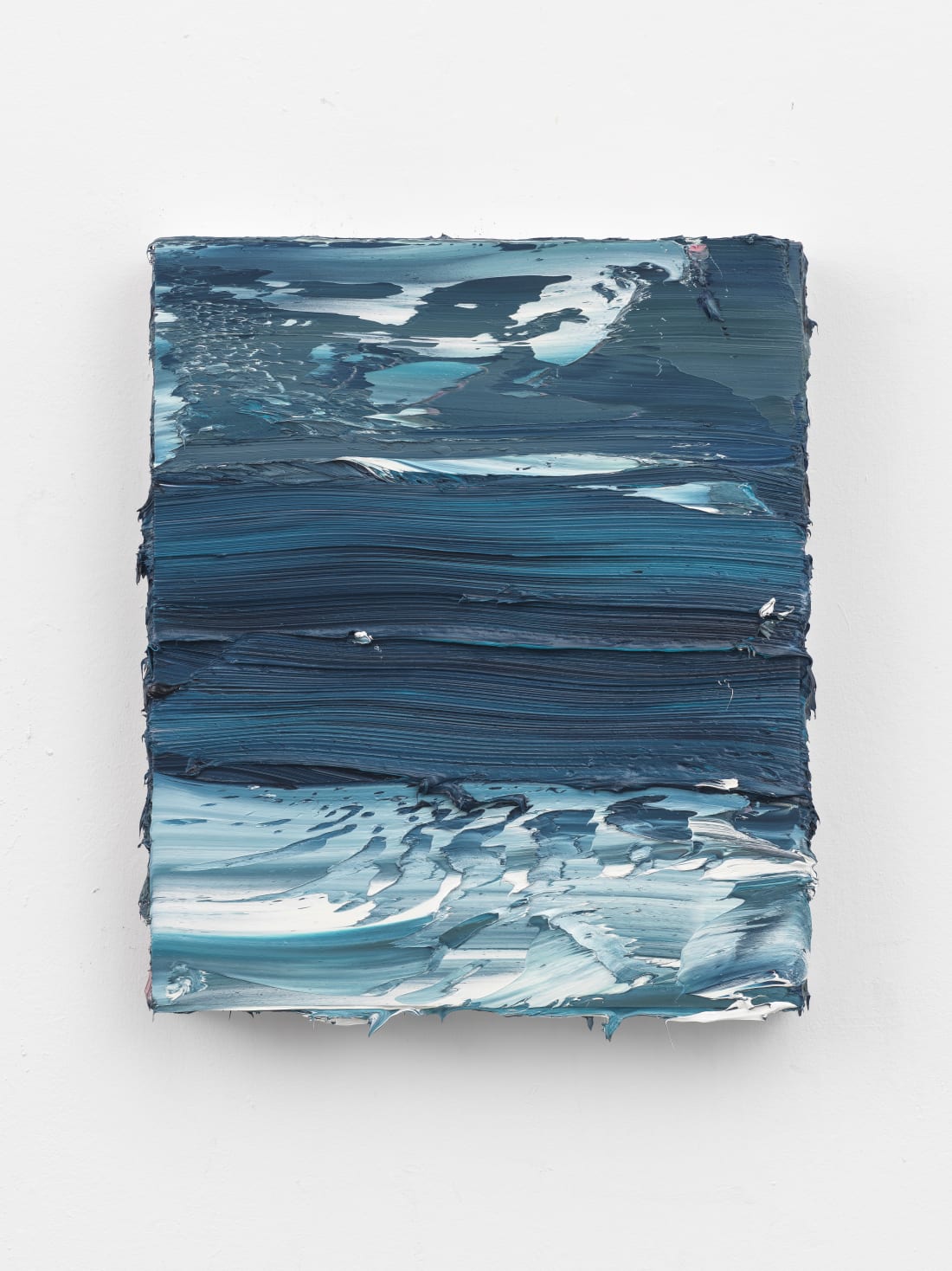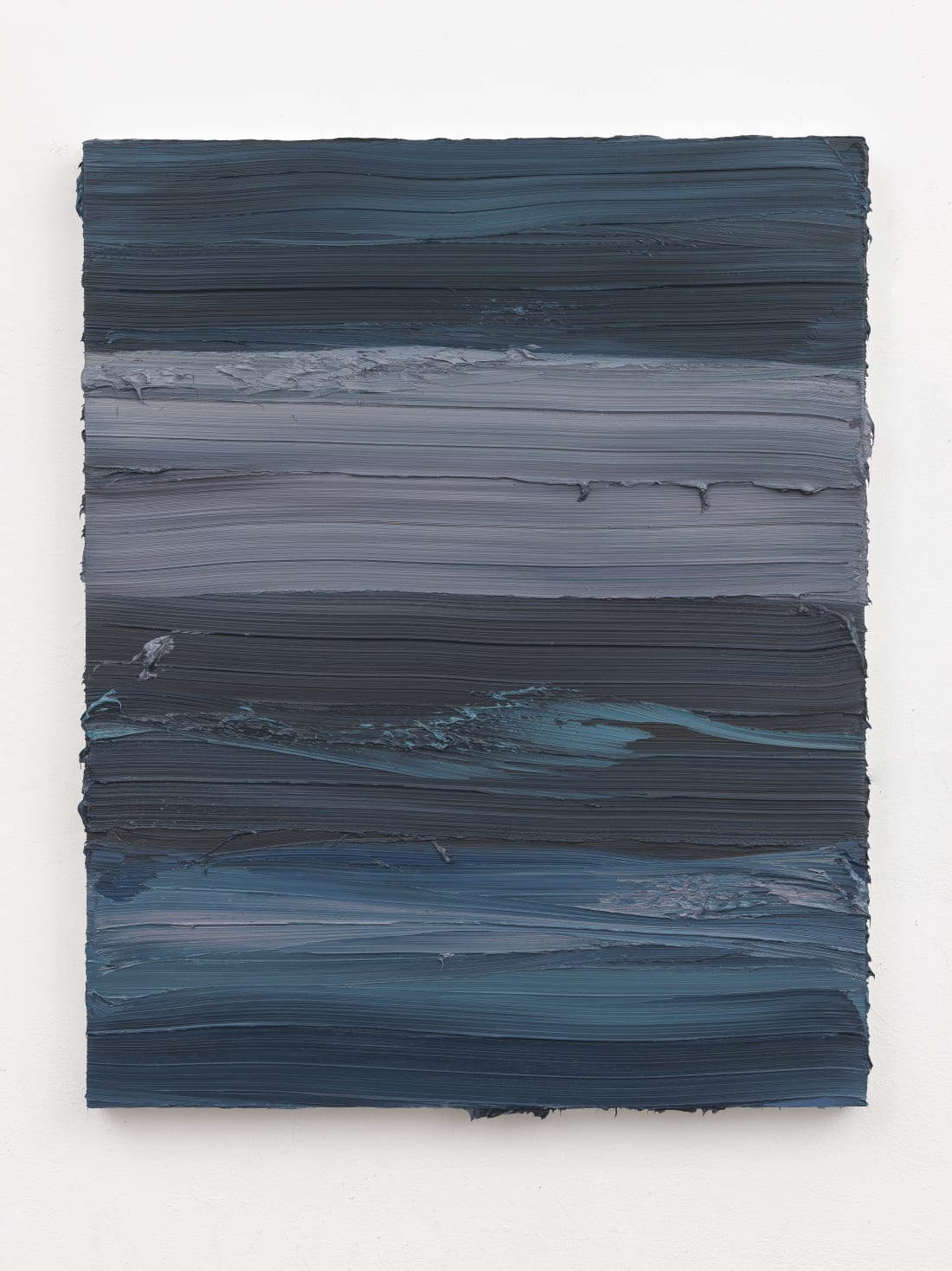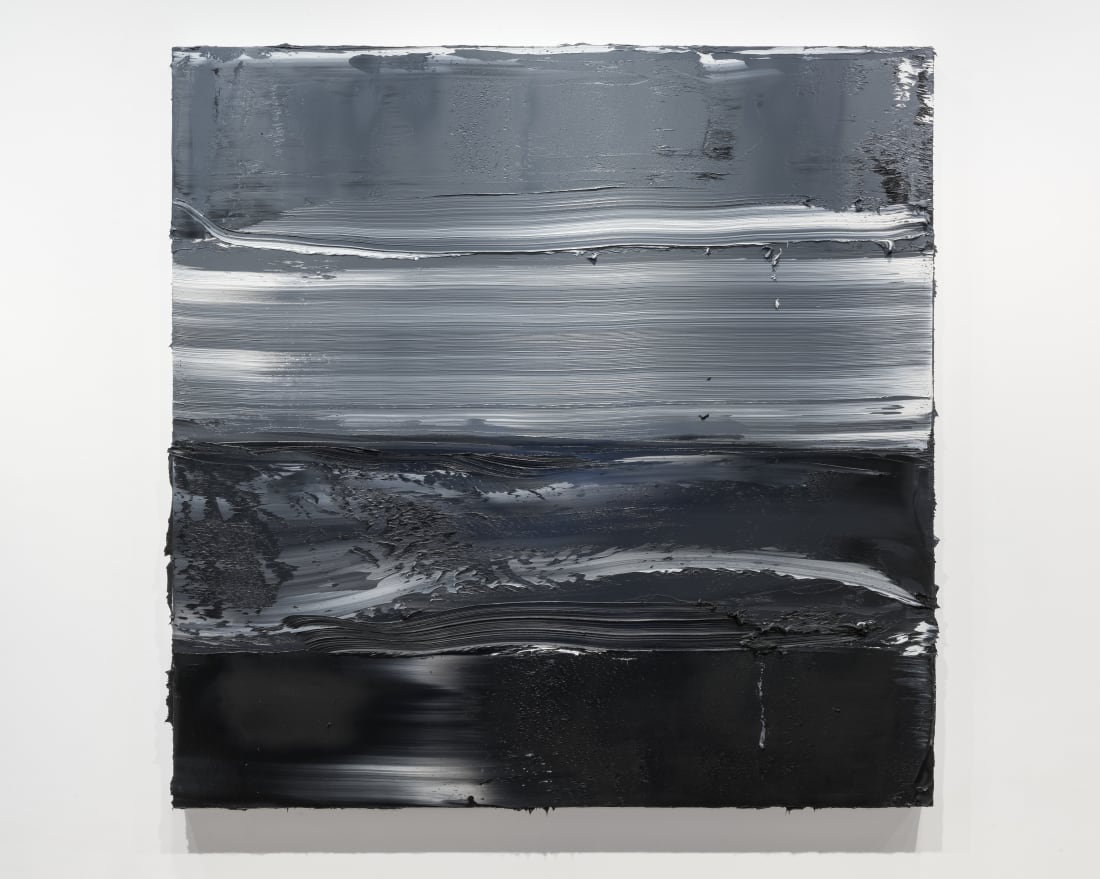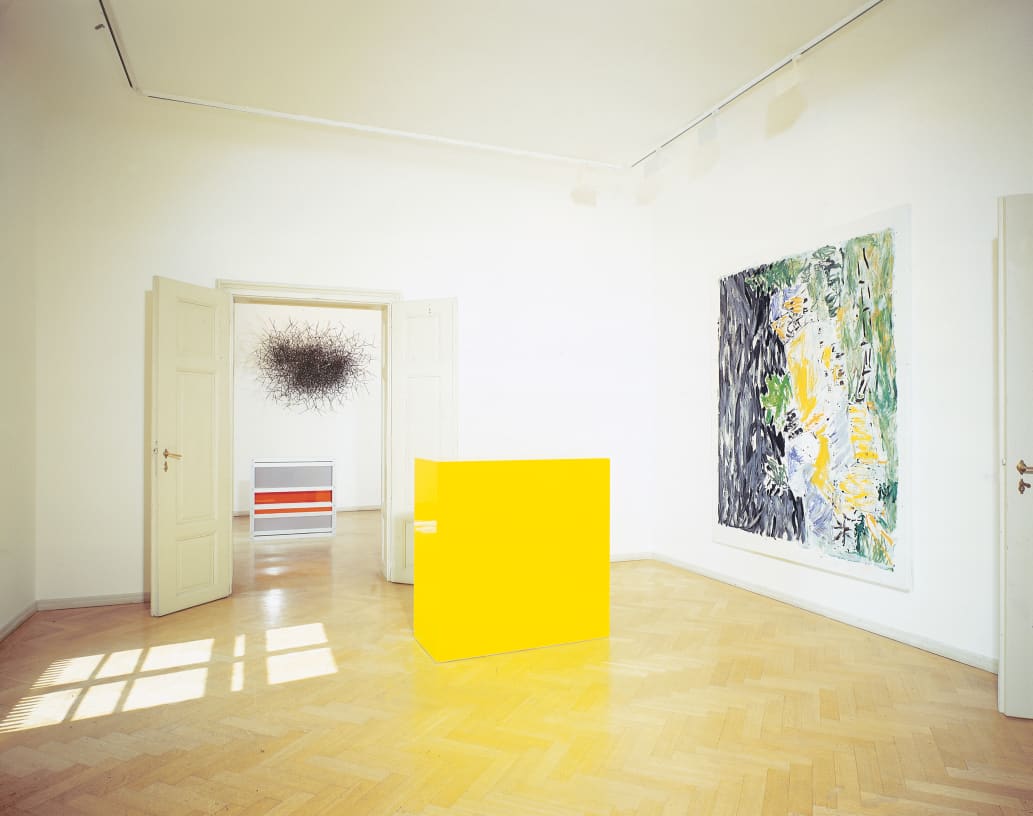

Jason Martin
Overview
'I've always viewed myself as a landscape painter dressed up as an abstractionist. When you look at my works, you gaze into this imaginary space beyond and project associations from your own mental landscape on it. To me figuration and abstraction are beautifully intertwined.'
Firmly anchored in the Modernist practices of the gestural and monochrome, Jason Martin consistently challenges the definition of painting, creating intensely pigmented works with extraordinary sculptural qualities that bridge the two- and three-dimensional. The process-based formalism of Martin's approach reflects the influence of artists such as Robert Ryman, although he argues that 'the most interesting abstraction has a source of figuration [...] there is a warmth of figuration that I try to effect into the movements – gestures – that I make [on the canvas].'
In Martin's early works, while still a student at Goldsmiths in the 1990s, he manipulated striations of oil paint or acrylic gel on metal or Plexiglas grounds using a comb-like tool he created – a technique that he has refined throughout his career. This is used to create energetic ridges and furrows of pigment that can be read as extreme close-ups of a painterly brushstroke, drawing attention to the action and materiality of painting itself. His works are structurally varied, ranging from a thin glaze through which the metal ground gleams to sculptural reliefs with overlapping ridges and furrows. In the context of Martin's notion that landscape painting and abstraction are intertwined, his work becomes an imaginary space, a mental landscape, an abstracted and mesmeric focal point for contemplation.
Firmly anchored in the Modernist practices of the gestural and monochrome, Jason Martin consistently challenges the definition of painting, creating intensely pigmented works with extraordinary sculptural qualities that bridge the two- and three-dimensional. The process-based formalism of Martin's approach reflects the influence of artists such as Robert Ryman, although he argues that 'the most interesting abstraction has a source of figuration [...] there is a warmth of figuration that I try to effect into the movements – gestures – that I make [on the canvas].'
In Martin's early works, while still a student at Goldsmiths in the 1990s, he manipulated striations of oil paint or acrylic gel on metal or Plexiglas grounds using a comb-like tool he created – a technique that he has refined throughout his career. This is used to create energetic ridges and furrows of pigment that can be read as extreme close-ups of a painterly brushstroke, drawing attention to the action and materiality of painting itself. His works are structurally varied, ranging from a thin glaze through which the metal ground gleams to sculptural reliefs with overlapping ridges and furrows. In the context of Martin's notion that landscape painting and abstraction are intertwined, his work becomes an imaginary space, a mental landscape, an abstracted and mesmeric focal point for contemplation.
Born in Jersey in the Channel Islands, Martin and lives and works between London and Portugal. He first came to prominence through his inclusion in the legendary 1997 exhibition Sensation: Young British Artists from the Saatchi Collection at the Royal Academy of Arts, London, which established the Young British Artists (YBAs). In 2004, his work was included in the Monochrome exhibition at the Museo Nacional Centro de Arte Reina Sofía, Madrid, followed by major solo exhibitions at the CAC Málaga and Mönchehaus Museum, Goslar, Germany (2008); Peggy Guggenheim Collection, Venice (2009); and Museum gegenstandsfreier Kunst, Otterndorf, Germany (2016). A retrospective of his work from the past two decades was on view at SCHAUWERK Sindelfingen in 2017.
Videos





Artworks
Exhibitions
Publications



















































































































































































































